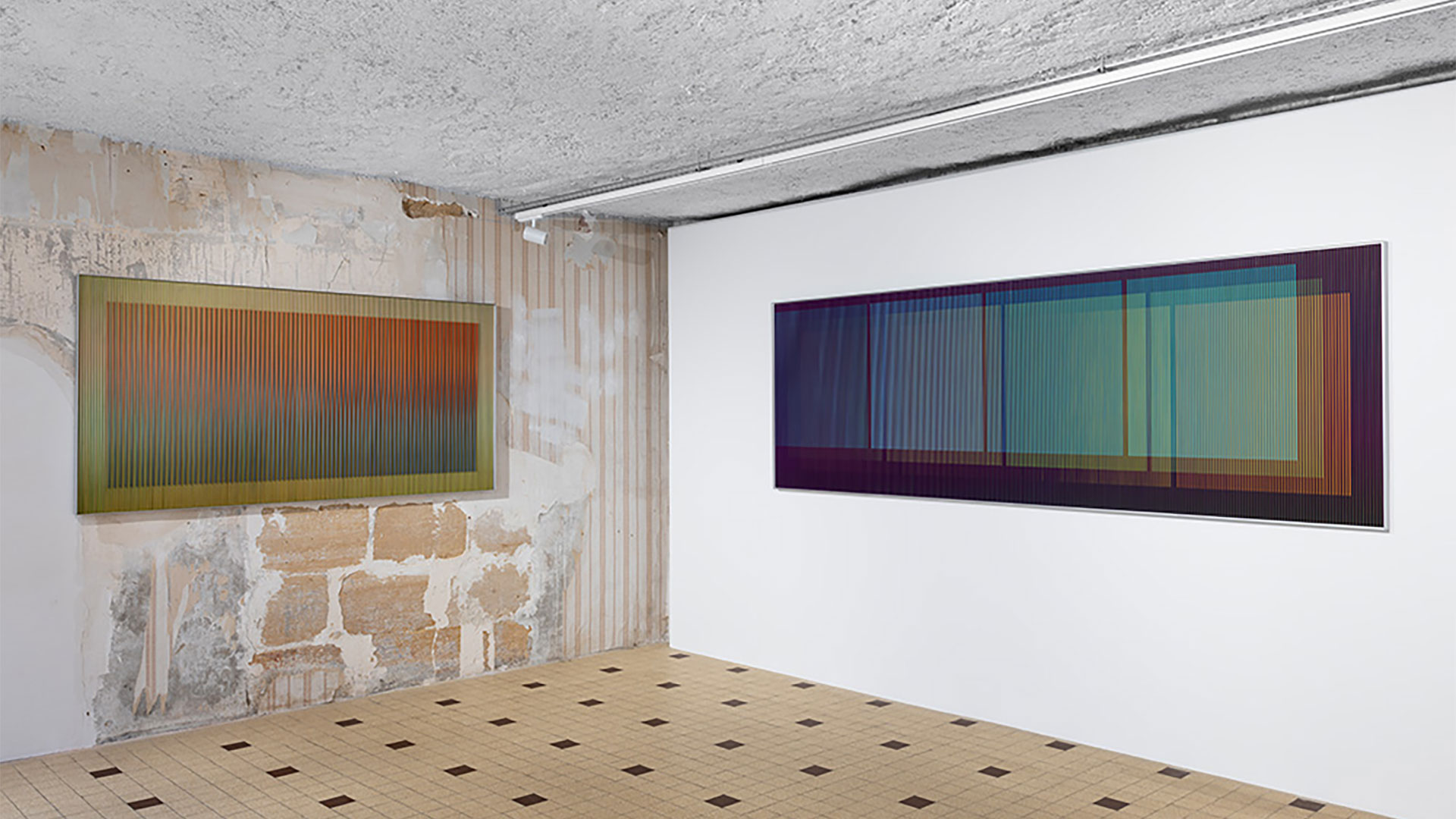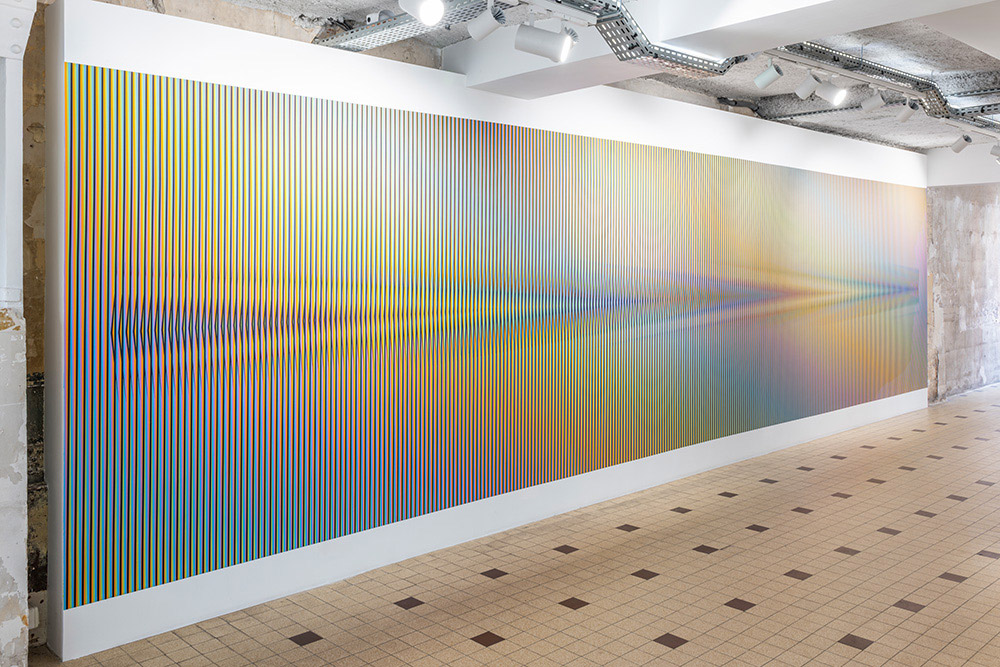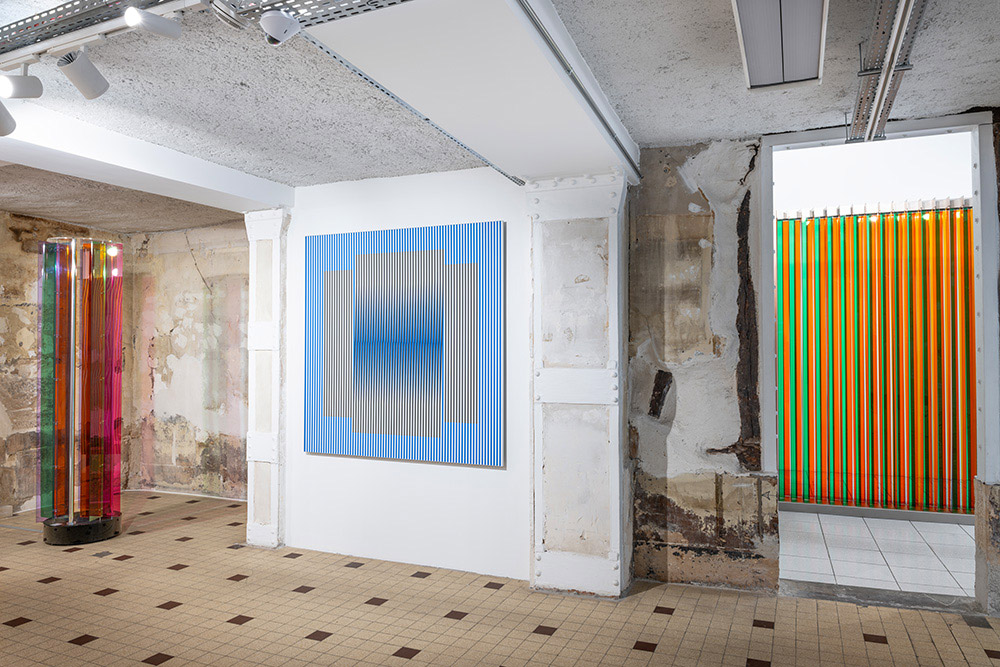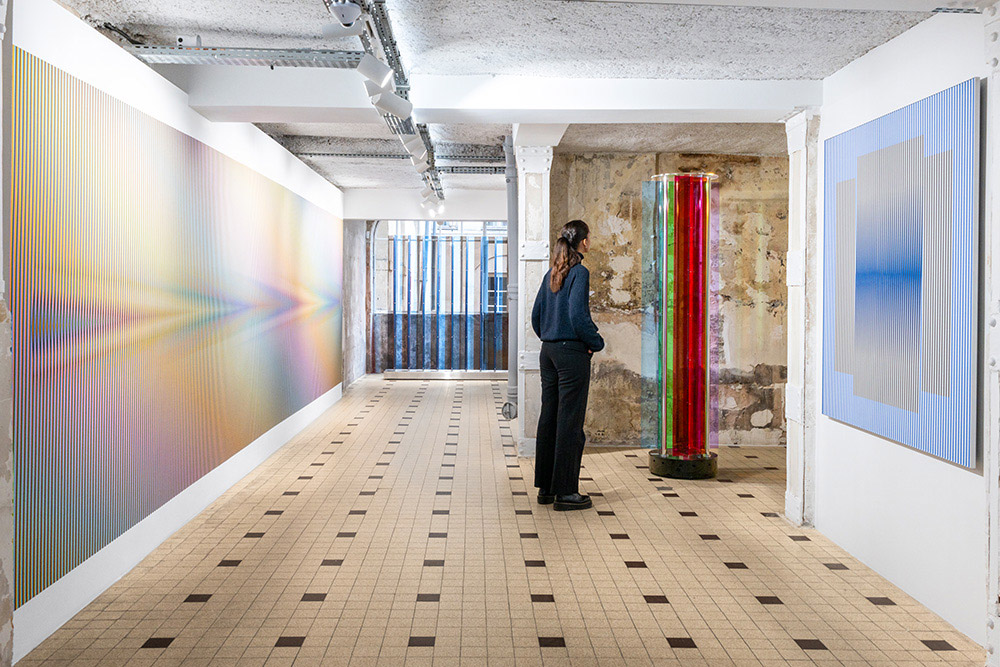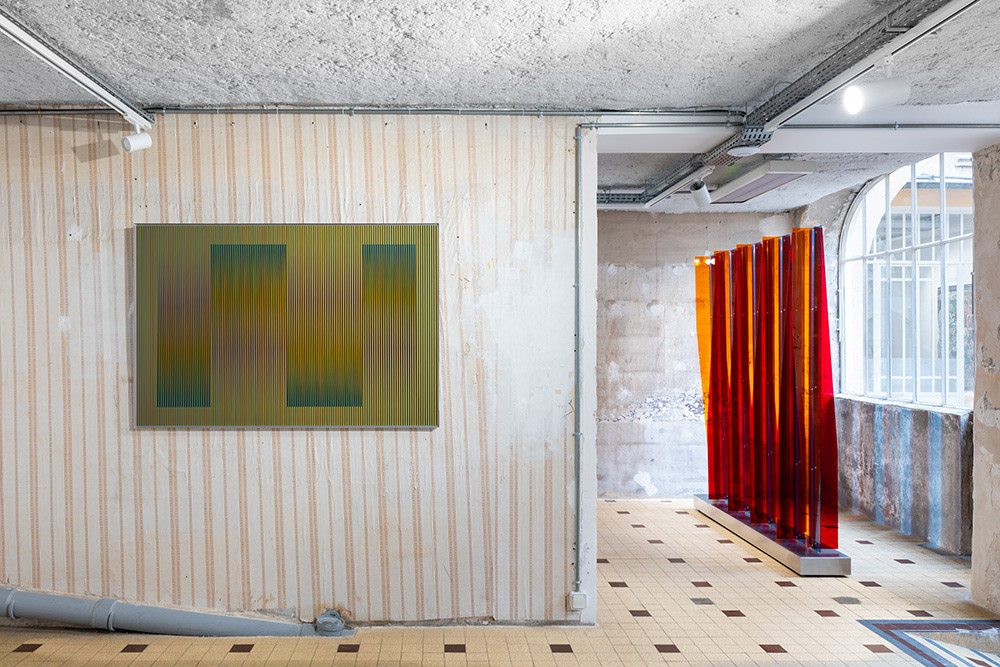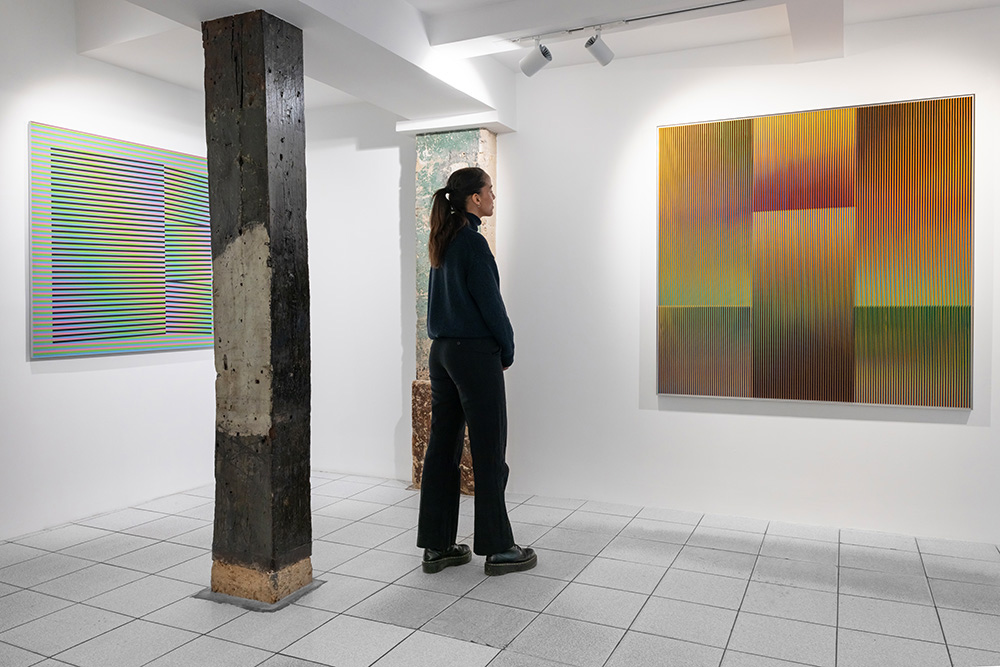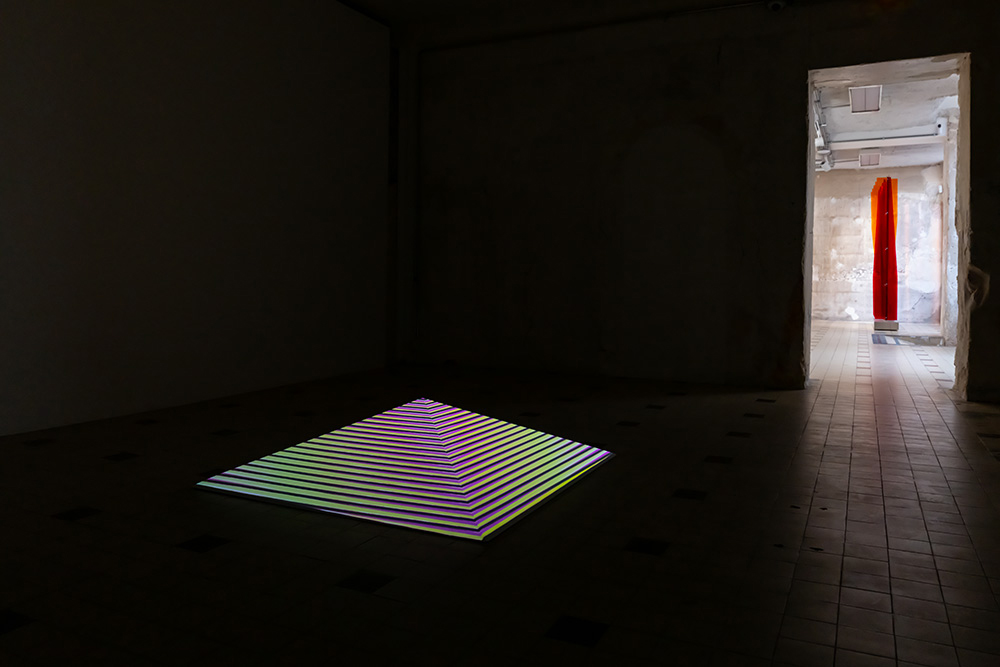Galleria Continua is delighted to present in its Parisian space the Franco-Venezuelan artist Carlos Cruz-Diez’s first solo exhibition.
A major figure in contemporary art, a pioneer of kinetic art (1923-2019), Cruz-Diez is an undisputed master of colour. Throughout his career, he has experimented with and developed a large number of proposals that have remained emblematic of his artistic language. In tune with the profound societal changes taking place around him, he dedicated himself to inventing a new body of work, exploring unconventional techniques and technologies that would play a decisive role in his approach.
Carlos Cruz-Diez was thirty-seven years old when, in 1960, he decided to leave Caracas and move to Paris with his family. After studying at the Académie des Beaux-Arts and a long spell as an illustrator, he chose the cultural vibrancy of Paris to pursue his investigation of perceptual-sensory dynamics. L’euphorie de la couleur (The Euphoria of Colour) presents the highlights of Carlos Cruz-Diez’s artistic career, exploring his theory of colour through some of his most emblematic works.
The landmark works Fisicromía 54 and Fisicromía 55 (1962) and Objeto rítmico móvil manipulable (1956) represent the beginnings of the artist’s research into the dissociation of the binomial of form and colour and the fragmentation of the plane, research that the artist approached in order to transcend the notions of the purpose of art.
This exhibition presents five of the eight proposals developed by the artist, based on three colour conditions (subtractive, additive and reflective), each of them responding to different colour behaviours. The Couleur Additive (1959) is based on the radiation of colours. When one colour plane touches another, a coloured line appears at the point of contact. And yet this virtual colour is not in the medium. By isolating this optical phenomenon, Cruz-Diez obtains what are known as 'chromatic event modules', responsible for the continuous transformation of colour.
The Physichromie (1959) are structures designed to reveal certain circumstances and conditions related to colour, changing according to the movement of the viewer and the intensity of the light, and thus projecting colour into space to create an evolutionary situation of additive, reflective, and subtractive colour. The movement of the viewer or the light source creates a series of chromatic variations.
The Inductions Chromatiques (1963) are closely related to the phenomenon of after-image, or retinal persistence. In other words, the retina of the eye, after gazing at a coloured plane for a certain length of time, retains, even after the observer has looked away, an image of the plane – but now in the induced colour or complementary colour. Inductions Chromatiques make visible a phenomenon that can only be captured momentarily and in very specific circumstances. The colour that appears is and is not – it has a virtual existence – but is just as real as the pigments used.
Induction Chromatique à double fréquence (2018) on the long wall of the corridor is one of the monumental works whose format relates to the architecture of the space. The viewer’s movements around the work, as well as the viewing distance and luminosity, reveal with greater force and precision the chromatic changes and effects that appear and disappear in the course of the dialogue generated between the viewer and the work, making walking an aesthetic act.
The Chromointerferences (1964) result from the superimposition of parallel lines (modules of chromatic events) modulating the colouring of the work according to the distance from which the viewer looks at it. Created during a silk-screening project focusing on Couleur Additive, the artist overlaid a transparent sheet of plastic and observed the colour interferences. These cause blurred vision and generate colour ranges that are invisible on the original medium.
The Pyramide Chromointerférente (2007) creates a situation of immateriality, revealing the transfiguration and ambiguity of colour. By projecting moving chromatic interference modules onto the volume, the pyramid becomes transparent and virtually changes shape and condition. The Transchromies (1965) are based on the behaviour of colour by subtraction. Transparent coloured slats are used at different distances and in a specific order to play on the intensity of the light and the ambient colour. The resulting modular transparency allows the viewer to see partially through the colours.
Read more +
Read less -







 Sign in with email
Sign in with email


